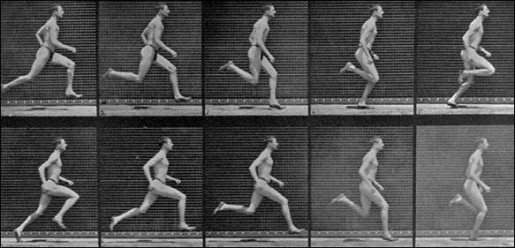I truly love this topic with runners. It has sparked a tremendous debate in all circles of the sport of running. These debates open up new possibilities and discussions in gait biomechanics, joint arthrokinematics, rehabilitation guidelines, training recommendations, footwear design, injury prevention, etc. In the past 10 years, since Born to Run by Chris McDougall was first published, the theories and speculation, the research, and the soap boxes have become more pronounced and highlighted than ever before in the sport. As a Board Certified Sports Physical Therapist I am thrust into this world (very willingly) and the controversies and opinions that have been created and formed. I have spoken with 100’s of runners, have read all of the research (and a lot of the theories) , have personally trialled a full representation of footwear, and have learned from and listened to the top experts in the world with regards to everything related to how the foot hits the ground and what this does to the body and/or to that individual’s performance.
It really is a great discussion and I feel like there is no one answer for all of us. Like most things in life, we are all different and therefore react different to different demands and stressors. Without getting too philosophical, this article will only focus on the mechanics, injury prevention, and rehabilitation as related to this debate.

Mechanics
Runners wearing traditional shoes (think Brooks Beast/Adreneline or Asics Kayano/2170) typically land on their rear foot (calcaneus). Rear foot striking involves initial contact of the lateral aspect of the heel (heel strike) . As weight and momentum are translated forward, the foot begins to pronate and dorsiflex into the next phase: foot flat or mid stance. This phase includes full weight bearing through the one leg on the ground and all ground reaction forces are translated from the plantar fascia all the way up to the abdominal muscles (the core). Depending on foot mobility and anatomy, the foot will pronate (for some, a lot, for others very minimally) so that all five toes are on the ground and allow for the forefoot to provide propulsion in order to increase/maintain speed while running. This leads to heel off which progresses to toe off.
Runners with a midfoot or forefoot strike land on the lateral aspect of their midfoot/forefoot, but due to the foot’s plantar flexed position, there is very little pronation and an immediate activation of the soft tissue supports: plantar facia and posterior leg muscles to provide structure to the foot. This leads directly to foot flator mid stance which leads to heel off and then to toe off.
Injury Prevention
Research shows, and a I fully support, the importance of improving foot, leg, hip, and core strength and stability in all runners. With rear foot strikers, the shoe is designed to help absorb some of the ground reaction forces especially in the sagittal plane. With minimalist footwear there is typically less cushioning and no structure to the shoe, therefore the ground reaction forces are being absorbed in the runners muscles and or joints. This emphasizes the need for a good dynamic warm up, consistent post-run stretching, and off day strength training. Most runners run to get into shape but in reality, WE SHOULD BE IN SHAPE TO RUN!!!
Rehabilitation
Rehab has evolved and adapted in all aspects of sports medicine. With the changes seen in running over the past 10 years, we are seeing overuse injuries we did not typically see with more traditional rear foot striking runners. The research has been fast and furiously trying to keep up with the newest and most effective treatment recommendations and with pretty good success.
We are learning there are many variables that need to be considered for every runner and realistically, as everyone is different, every runner should be evaluated and examined by an expert in lower body running biomechanics, injury prevention, and rehabilitation in order to get customized recommendations.
John-Henry Anderson, PT, DPT, SCS, CSCS
Doctor of Physical Therapy
Board Certified Sports Clinical Specialist
Certified Strength & Conditioning Specialist









